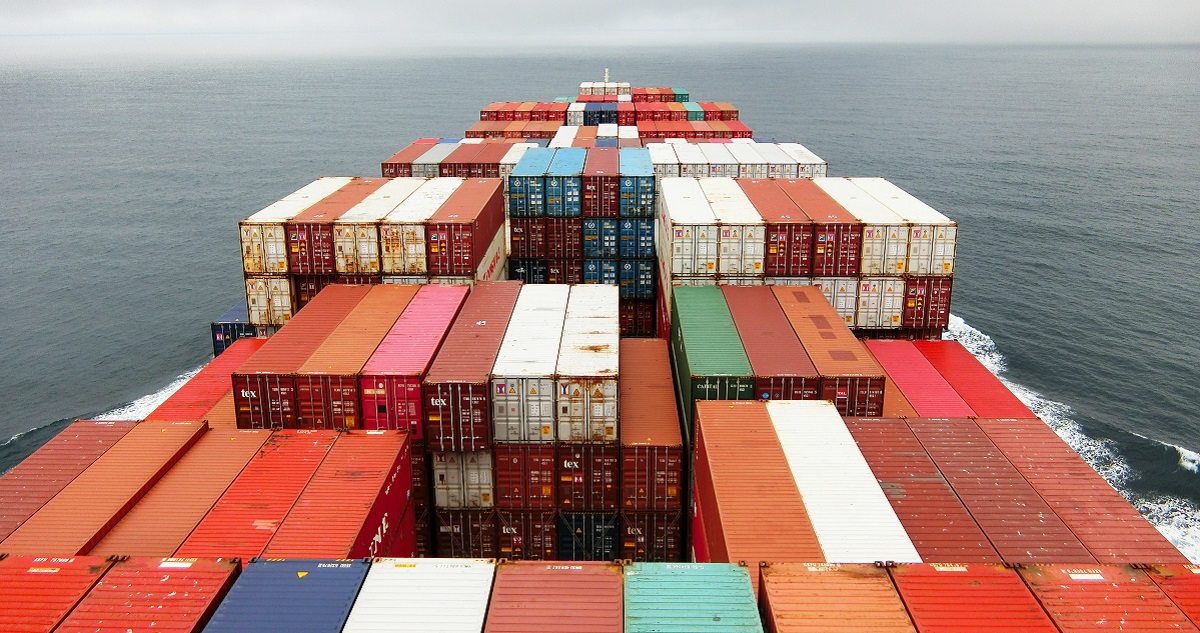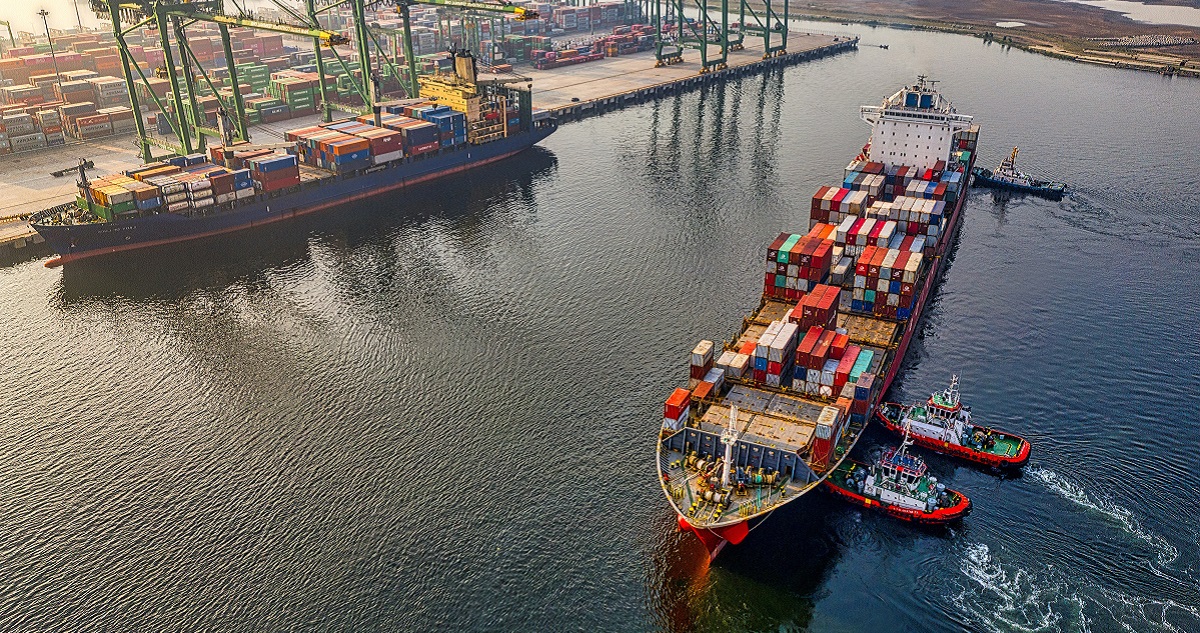It is estimated that a typical containerized cargo shipment has 30 parties involved in its journey and passes through at least two seaports and one or two inland ports. Each container’s movement from source to destination will generate an average of 200 interactions between the interested parties. Tracking and administering cargo globally across multiple jurisdictions is complex. It’s no surprise the days of spreadsheets and paper-based records are numbered.
The move to digital technologies, and in particular the Internet of Things (IoT), Enterprise Asset Management software and Blockchain, is already having a transformative effect on operational efficiency and planning in ports and terminals around the world.
Technology can deliver real-time information to inform timely and accurate decisions. It can drive increased efficiency, underpin compliance, reduce operating costs, increase oversight across operations and ensure demanding safety and equipment maintenance schedules are met.

COVID and reduced volumes
At the beginning of the COVID-19 pandemic, port operators have seen volumes decline by up to 20 percent. In the last few months, amplified by the Suez Canal and Pearl River Delta incidents, these same operators saw volumes bounce back in leaps and bounces. The sudden impact on supply chains and the global economy dramatically highlighted the need for ports, terminals, and logistics operators to recognize and address operational inefficiencies in the face of diminishing returns. Embedding business agility and resilience sits high on the agenda, as well as ensuring the smoothest, fastest possible turnaround for users of the facilities – be it at the gate, yard, vessel or terminal. Digital transformation, alongside cloud enterprise software solutions such as IFS, are showing the way forward. A recent IFS study exploring organizations’ plans for 2020 and beyond revealed more than 70 percent planned to increase spend on digital transformation — or maintain it at current levels — in the coming years 1.
Optimizing cargo handling with the Internet of Things (IoT)
Embracing IoT and connecting to critical assets via sensors unlocks the transformative possibilities of Smart Asset Management. With real-time streams feeding signal and fault data to Enterprise Asset Management software such as IFS, operators can schedule, optimize, and monitor capabilities like condition-based asset maintenance, yard management and truck deployment. Some operators are already gathering and using real-time sensor data from tidal movements and weather patterns to inform berthing maneuvers and minimize vessel waiting times.

Uniting stakeholders through Blockchain platforms
Ports must work with numerous public and private stakeholders including shipping companies, terminal operators, logistics operators and more. Managing this operational and regulatory documentation and information flow is administratively challenging: it must overcome different technology platforms and diverse jurisdictional compliance requirements. Open source standards for paperless (electronic) bills of lading for containers are still in discussion 2. Failing to manage documents efficiently has become a serious burden and a barrier to sustainable operation.
In contrast, Blockchain technology offers a unified, timestamped, unchangeable record-keeping system that securely stores and shares all transaction record information peer-to-peer, across all computers in a network.
Blockchain-based information exchange allows ports to securely link disparate systems used to record, declare, and track goods, giving more transparency to customers and reducing the time spent manually re-entering data. Coupled with IoT tracking systems, blockchain technologies have the potential to be the platform for the next generation of efficiency at ports, giving cargo owners greater security, visibility, and control over their shipments.
Over the last three years, probably 50 percent of ports have begun experimenting with Blockchain approaches. But it’s not simply a case of replacing the Ports Community Service or EDI systems. To succeed, Blockchain will require global consensus on uniform ways of working. Beneficial Cargo Owners, major e-tailers, shippers, consignees, and vessel operators will all need access to a uniform modus operandi. With two clear platforms now emerging, TradeLens, a blockchain-enabled shipping solution developed by Maersk and IBM; and Global Shipping Business Network (GSBN), we can soon expect to see global blockchain standards in place.

From operationally reactive to proactive and predictive
In the face of increasing competition, adopting modern integrated cloud Enterprise Asset Management (EAM) and Enterprise Resource Planning (ERP) solution platforms like IFS, offers ports and terminals the tools and insight need to deliver the most efficient, cost-effective and attractive experience – or ‘Moment of Service’ – for their users. Real-time dashboards and capabilities spanning projects, finance, supply chain, human capital, asset management, health and safety, terminal operations and resource management are available in a seamless, unified system.
In parallel, by using artificial intelligence (AI) and machine learning (ML) software, digital twin technology can create a virtual replica of a port, allowing ‘what-if’ scenarios to be explored, and resolutions and improvements to be modeled. For example, predicting failure and optimizing preventative maintenance plans for operationally critical port assets and infrastructure, such as cranes and horizontal transport equipment, to maintain operational performance and uptime.
Managing the transition
When it comes to embracing transformative enterprise technology effectively and maximizing business value from assets, there is simply no substitute for sector-specific knowledge and integration expertise. In the case of ports and terminals, for example, IFS partner Envecon has implemented IFS solutions in more than 100 terminals worldwide, enabling a seamless Moment of Service for customers at the yard, quayside and gate.
Download our white paper to learn how IFS is helping digitally transform Ports and Terminals around the world.
Additional Information
This blog post was co-authored by Vincent Elfring, Senior Vice President of Transport and Logistics and Envecon and LogStar.
About Envecon
Envecon is a leading global digital transformation provider to the Aerospace & Defense, Energy & Utilities, EPCI, Manufacturing, Oil & Gas, and Transport & Logistics industries. Envecon is passionate about delivering business outcome-based results to customers through in-depth industry knowledge and global experience.
Envecon has successfully delivered 300+ IFS projects across 50 countries and is the proud winner of the “IFS Services partner of the year” award.
Do you have questions or comments?
We’d love to hear them so please leave us a message below.
Follow us on social media for the latest IFS news!
LinkedIn | Twitter | Facebook | Instagram
1. IFS (2019): Digital Transformation Investment in 2020 and beyond
2. United Nations Conference on Trade and Development: Review of Maritime Transport 2020